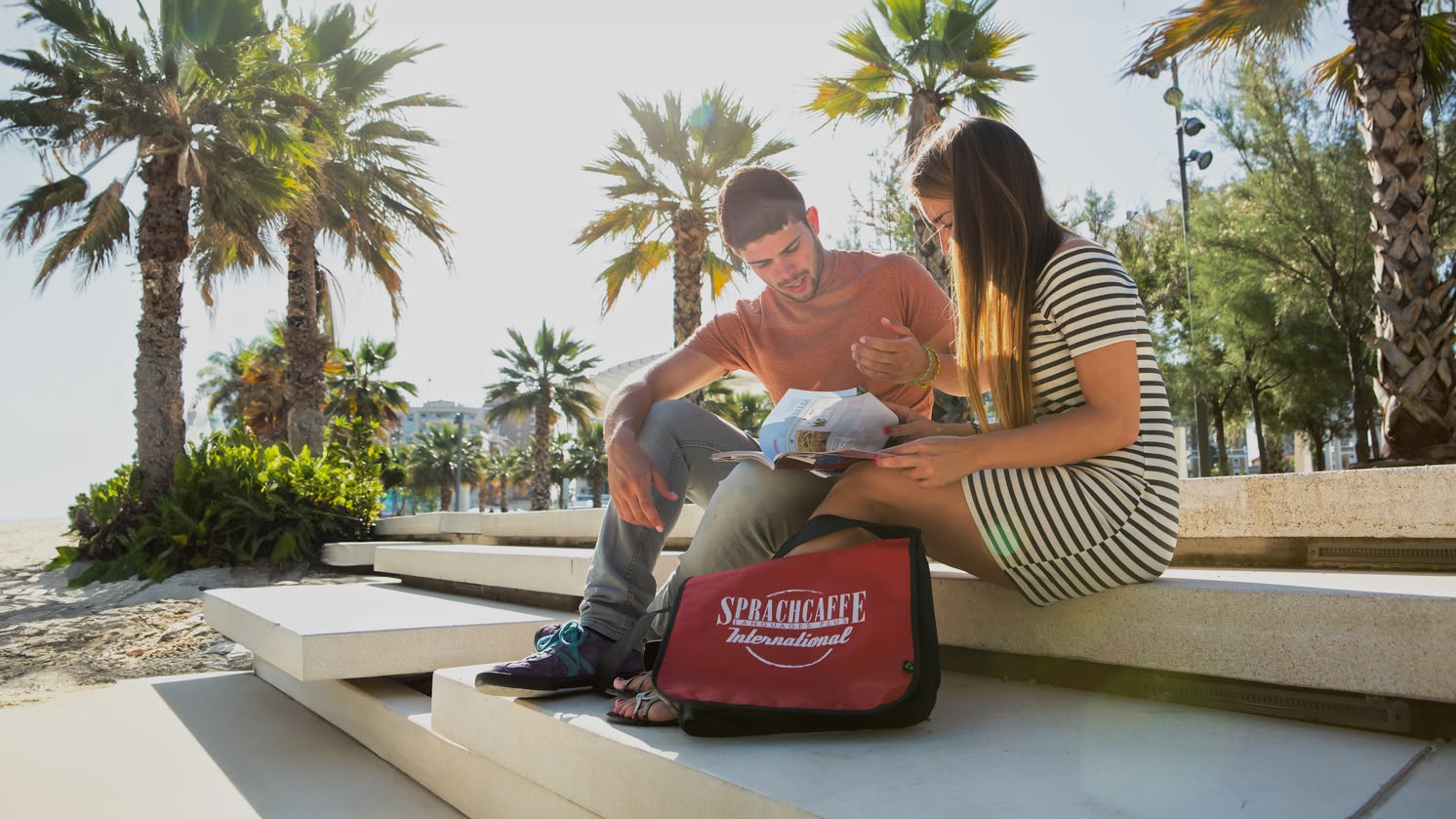English Language Courses
English will soon be more than just a global language; but will become an invitation to a world culture. Learning the English language in an environment where it is used daily allows students to absorb the language in a spontaneous atmosphere. This opportunity simultaneously exposes them to different cultures and people. By giving students the confidence to experiment with their newly acquired skills with locals and fellow students they are immersing themselves in the surrounding community.
With a variety of English language course options held in unique travel destinations, Sprachcaffe has a tailor-made course for every individual. With our English language courses, we combine your language course with great holiday experiences, making your English language trip something very special. Combining your English language learning opportunity with foreign cultures and exotic destinations will provide you with every element needed for a memorable language and travel experience; it's the best way to improve speaking. Choose an English language school from our selection for your next language trip, and start taking your English classes!
You don't have the time to go on a language trip? Do not worry! We also provide tailored online English language lessons for beginners to advanced learners. You are proficient in reading, writing, and listening in English, but you do not seem to be competent in speaking it. With our private online English courses, you can personalize your lesson plan to your specific needs and concentrate on English-speaking classes.
Where do you want to travel?
Your perfect English language trip
Learn English successfully
We'll show you the best way to learn English by giving you useful tips on grammar, vocabulary, pronunciation and much more.
Would you like to experience life in a host family or would you prefer to share a flat with other participants? You are spoilt for choice!
Courses for everyone
Whether you are a beginner, advanced or preparing for a language certificate, choose the course that suits your goals and effectively improve your English.
Our services
From placement tests to qualified teachers and a centrally located language school, our English language courses offer it all.
FAQ about English language trips
Travelers from countries that do not require a visa, including EU member states and Switzerland, need to apply for an Electronic Travel Authorisation (ETA) to enter the United Kingdom.
The ETA is a visa-free travel permit that allows you to stay in Great Britain for up to 6 months.
You can apply for the ETA exclusively online or via an app on the official UK government website. It's not possible to apply for it on our website. The Electronic Travel Authorisation is valid for 2 years.
If you have any questions about entry requirements or need our support, feel free to contact us at any time.
Unlike a normal English language course, on an English language study trip you will be in constant contact with the language, even outside of the courses. You will be able to use what you have learned in everyday life and speak English with locals and other international course participants. You will also discover the culture of the country of your choice, learn phrases and colloquial words from native-speaking teachers, and become familiar with the customs and way of life of the country.
Because you are constantly confronted with the English language on your English language study trip, you constantly go outside your comfort zone and, in this way, increase your self-confidence when speaking the English language. Throughout your English language study trip, we will support you in improving your English skills!
With our English language schools all around the world, you have multiple options to choose from. We offer English language courses in Malta, England, Canada, South Africa and even in Germany! We have selected some truly dream destinations for your English language study trip! You can look forward to an English language study trip to lively world metropolises such as London, Brighton or Vancouver, whose uniqueness will simply overwhelm you! The only thing you need to decide is how much time you want to devote to English learning every week, and then we will take care of the rest!
Our English language courses are suitable for adults and juniors who want to learn the English language in a relaxed atmosphere and have an unforgettable holiday! No matter how old you are, whether you are a beginner and have little to no previous knowledge or whether you already speak English well but want to learn it perfectly - we have the right course for you. Additionally, you can take English speaking lessons or concentrate on other skills that you need to improve with our private lesson option.
There are many ways to learn English. Of course, you can use free methods to learn English. However, with these, you are usually on your own and have to put together a suitable strategy yourself. If you want to put your English learning in professional hands, there will be a cost to your English learning success.
One of the best ways to improve your English quickly and effectively is to go on a language study trip to an English speaking country. Depending on where your English language study trip takes you, the cost of learning English abroad will vary. For example, if you are planning a language study trip to Canada the costs for your language study trip will inevitably be higher than for a language study trip within Europe. Since you will not only learn English on your language study trip, but will also get to know the culture of the destination of your language study trip, you should choose the destination that appeals to you the most.
With a language study trip to an English-speaking country, learning English in 4 weeks is very possible. As you will be permanently confronted with the English language during your English learning program and will also take part in an English language course, you will make incredible progress in speaking English in a very short time. An English language study trip also gives you the opportunity to practice speaking English with native speakers. This will help you to improve your English, as you will be able to pick up some of the phrases and expressions that native English speakers use in their daily speech.
Our English language courses for adults can also be enjoyed by seniors. During your English language course, you will travel to the destination of your choice and spend a wonderful time together with like-minded people of all ages. During your English language course, you will receive English lessons that are optimally tailored to you, your language level and your needs.
Discover all options to learn English abroad
























